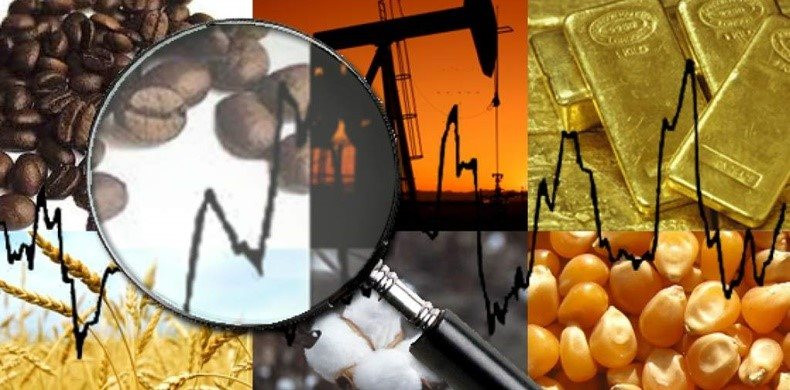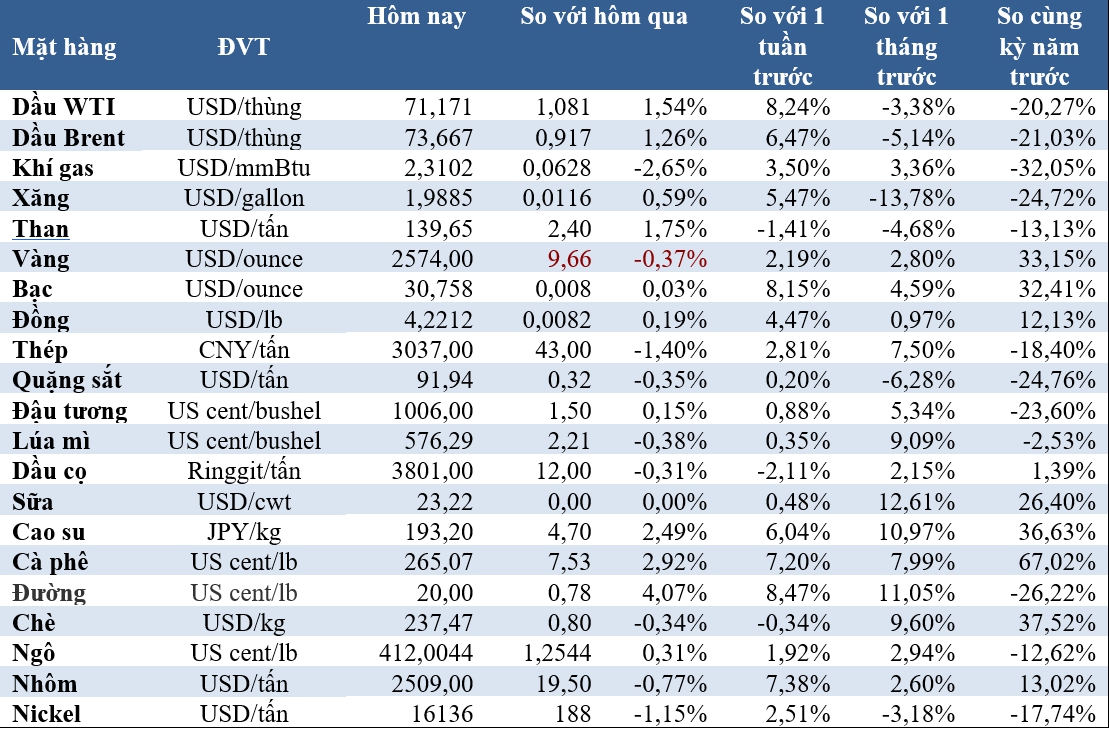
Illustration
Oil prices stable
Oil prices rose $1 a barrel on Tuesday as supply disruptions worsened and traders bet demand would pick up if the U.S. Federal Reserve cuts interest rates at its meeting this week as widely expected.
US West Texas Intermediate (WTI) crude futures rose $1.10, or 1.6%, to $71.41; Brent crude rose 95 US cents, or 1.3%, to $73.70 a barrel.
Capacity equivalent to more than 12% of U.S. Gulf of Mexico crude output was shut down following Hurricane Francine last week, pushing oil prices higher in four of the last five trading sessions.
Oil prices were supported by supply disruptions in Libya, where a rift between rival factions over control of the central bank has led to a drop in oil output and exports.
Libya’s crude oil exports tripled last week to about 550,000 barrels a day, but that’s still half the OPEC producer’s exports last month of more than 1 million barrels a day, data showed.
Gold down
Gold prices fell on Tuesday after rising to an all-time high in the previous session as the dollar and Treasury yields rose, while traders remained confident that the Federal Reserve will cut interest rates at its meeting this week.
Spot gold fell 0.5% to $2,569.43 an ounce. US gold futures for December delivery fell 0.6% to $2,592.40.
The focus in the financial sector is now on the Fed’s two-day policy meeting, which ends on Wednesday. According to the CME FedWatch tool, markets are now pricing in a 63% chance of a 50 basis point cut, up from 34% a week ago.
Copper falls from 2-month high
Copper prices fell from a two-month high on Tuesday after a surprise rise in U.S. retail sales supported a stronger dollar.
Three-month copper futures on the London Metal Exchange (LME) fell 0.3% to $9,362 a tonne.
US retail sales data showed a 0.1% increase in August. This beat forecasts (for a 0.2% decline), suggesting the US economy is strengthening, making the possibility of the Fed cutting interest rates by half a percentage point that financial markets are anticipating less likely.
The dollar rose from a one-year low on expectations of a modest interest rate cut. A stronger dollar makes commodities priced in the greenback more expensive, dampening demand.
Coffee increase
Coffee prices rose on Tuesday, heading toward a new multi-year high hit in the previous session.
December arabica coffee futures rose 2.3% to $2.65 a lb, after hitting their highest since 2011 at $2.7180 on Monday.
Citi bank said drought in Brazil has affected much of this season’s crop, (and) rains in the coming period are needed to salvage the situation.
November robusta coffee futures rose 1.1% to $5,303 a tonne, having peaked at $5,486 on Monday, their highest in nearly half a decade.
Cocoa reduction
December cocoa futures in New York fell 1.9% to $7,620 a tonne. March cocoa futures in London fell 1.9% to 4,590 pounds a tonne.
The global cocoa market is in its third year of deficit, while the global cocoa stockpile-to-process ratio has fallen to its lowest level in nearly 50 years. However, production could recover next season, keeping a lid on cocoa prices.
Wheat down
Corn futures had a volatile session as the US corn harvest increased and the crop is expected to be a bumper one, with corn growers taking advantage of relatively high prices to sell old corn.
Soybean futures also rose as traders watched heat and dryness in Brazil that could pose a threat to soybean seeding in the world’s top soybean exporter.
Chicago wheat futures fell on Tuesday as geopolitical tensions between Russia and Ukraine eased and strong Black Sea wheat exports continued to pose stiff competition to U.S. wheat exports.
At the close of trading, the most-active wheat contract on the Chicago Board of Trade (CBOT) fell 5-1/4 US cents to $5.73-1/4 a bushel, while soybeans edged up 1/4 US cent to $10.04-3/4 a bushel and corn fell 3/4 US cent to $4.10 a bushel.
Rubber increased sharply
Japanese rubber futures posted their biggest gain in more than three months on Tuesday, boosted by changing weather conditions across global producing regions, while rising oil prices also supported the market.
The February rubber contract on the Osaka Stock Exchange (OSE) closed up 15.6 yen, or 4.35 percent, at 374.5 yen ($2.66) per kilogram, marking its biggest intraday gain since June 7.
The Shanghai Futures Exchange is closed on September 16 and 17 due to China’s Mid-Autumn Festival and will resume trading on September 18.
Prices of some key commodities on the morning of September 18:

